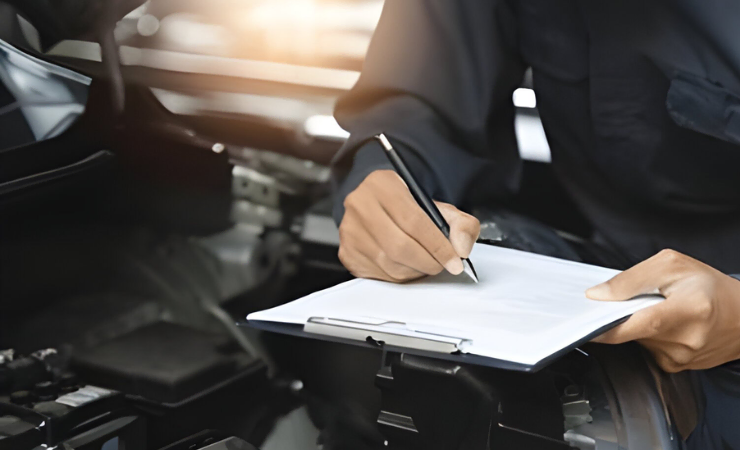The MOT test, which stands for the Ministry of Transport test, is an annual roadworthiness examination mandatory in the UK for most vehicles over 3 years old. It aims to ensure that cars and other light passenger vehicles meet the minimum legal safety and environmental standards before they can be used on public roads. But what exactly is checked during an MOT inspection? This article provides a detailed overview of the key areas and components examined.
The MOT assessment is extensive, checking over 50 vehicle systems and components. This ensures that there are no critical faults or defects that could affect the vehicle’s safety or cause harm to vehicle occupants, pedestrians, or other road users. Some of the major categories covered in the MOT test include:
Lights and Signaling Devices Inspection
The external lighting is thoroughly checked during the MOT. This includes an examination of:
- Headlights – alignment, brightness, beam color
- Taillights, brake lights, turn signals – operation and condition
- Hazard warning lights, fog lights, license plate light – functioning properly
- Horn – works correctly
All lighting must meet legal performance standards without any identified cracks, damage, or issues.

Steering, Suspension, and Wheels Assessment
The MOT inspection ensures that components related to directional control and stability of the vehicle are in sound working order through checks on:
- Steering wheel and column – excessive play or looseness
- Power steering system – leaks, functionality
- Front and rear suspension – the condition of springs, shock absorbers, wishbones, ball joints, and other linkages
- Wheel bearings, tie rod ends – wear and tear
- Wheels and tyres – tread depth, inflation pressure, bulges, cuts, cracks
Brakes Examination
Given their crucial role in enabling safe stops, extensive tests are done on the following:
| Component | Checks Performed |
| Service brakes | – Effectiveness – Imbalance – Binding issues |
| Parking brake | – Functionality – Effectiveness |
| Brake fluid | – Level – Contamination |
| Brake pads/shoes | – Wear – Damage – Security |
| Brake discs/drums | – Wear – Damage – Security |
| Brake lines/hoses | – Condition – Leaks – Routing |
| ABS system | – Warning light operation |
Seatbelts and Supplemental Restraint Systems Test
Key occupant safety systems are checked for defects:
- Seatbelts – operation, buckling and unbuckling, retractor mechanisms
- Airbag warning light – indicates system faults
- Seatbelt pretensioners – presence and condition
Driver’s View of the Road Check
The driver’s vision must be unobstructed; hence checks on:
- Windshield – cracks, chips, discoloration
- Windshield wipers and blades – operation, wear and tear
- Rearview mirror – condition and presence as legally required
Exhaust System and Emissions Measurement
The vehicle’s emissions impact is assessed by:
- Exhaust system – leaks, cracks, noise, routing
- Diesel particulate filter (DPF) – operation and regeneration
- Catalytic converter – security, tampering, modifications
- Exhaust gas analysis – HC, CO2, O2 levels using emission testing equipment
Other Items Inspected
Additional safety-related components checked include:
- Fuel system – leaks, fuel cap seal, tank security
- Doors – open, close, and lock securely
- Battery – security, leaks, condition
- Engine oil leaks
- Body condition – sharp edges, corrosion
Preparing Your Vehicle for the MOT
Conducting pre-MOT checks and fixes based on a MOT checklist greatly improves your chances of sailing through the test. Read this article on pre-test inspections and preparations.
The MOT evaluation covers over 50 vehicle safety inspection checks across all major systems, from brakes and tyres to seat belts and emissions. Meeting the MOT requirements indicates your vehicle meets the legal standards for roadworthiness. However, more comprehensive ongoing car maintenance is vital beyond just passing the annual MOT.
